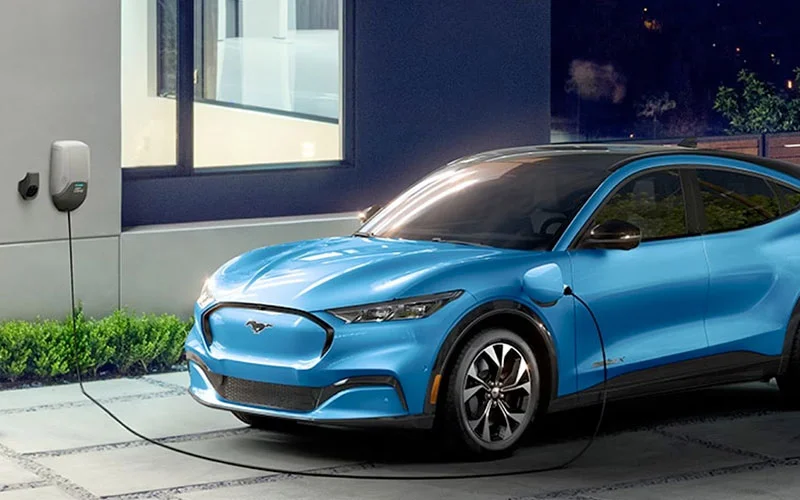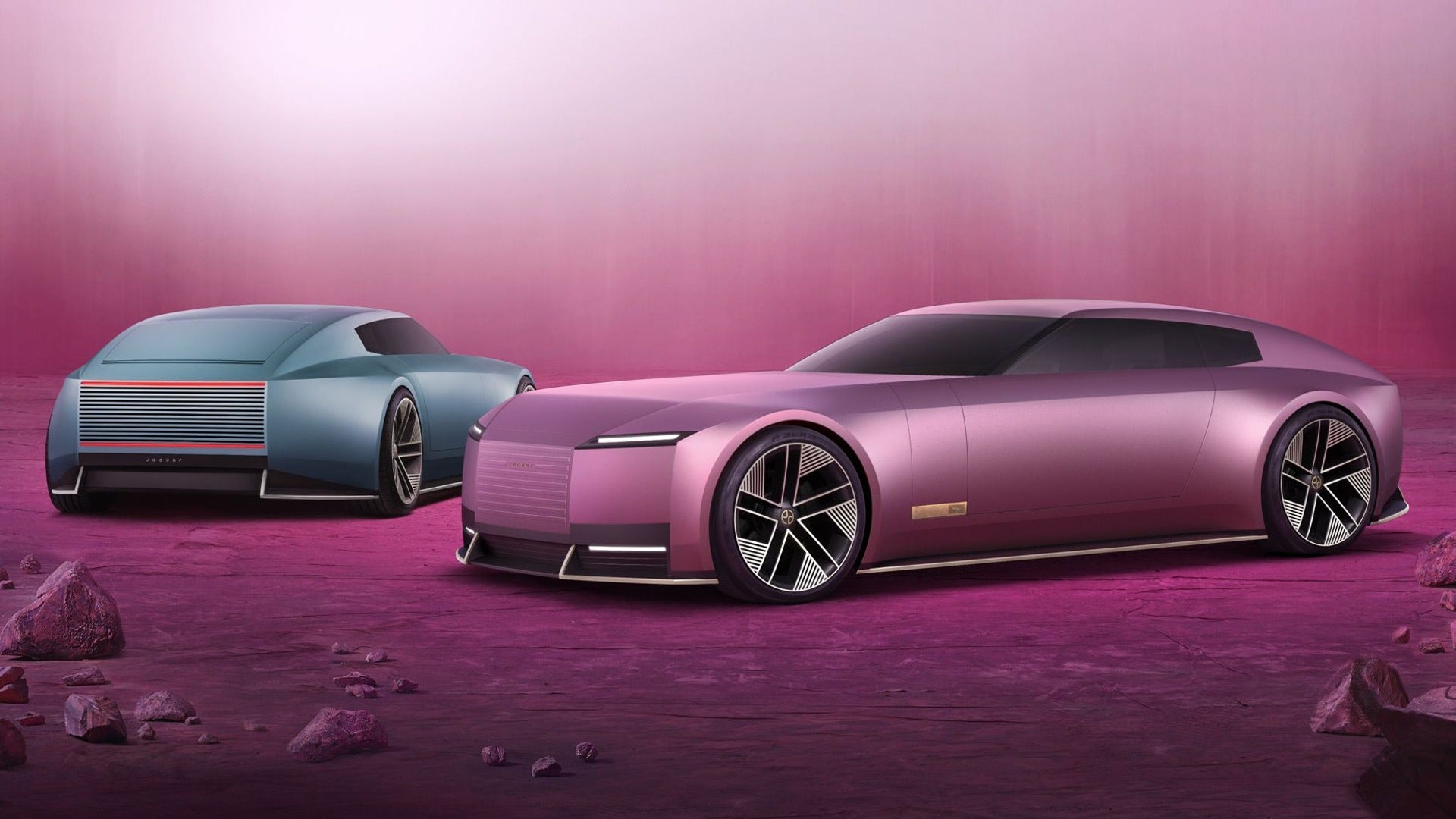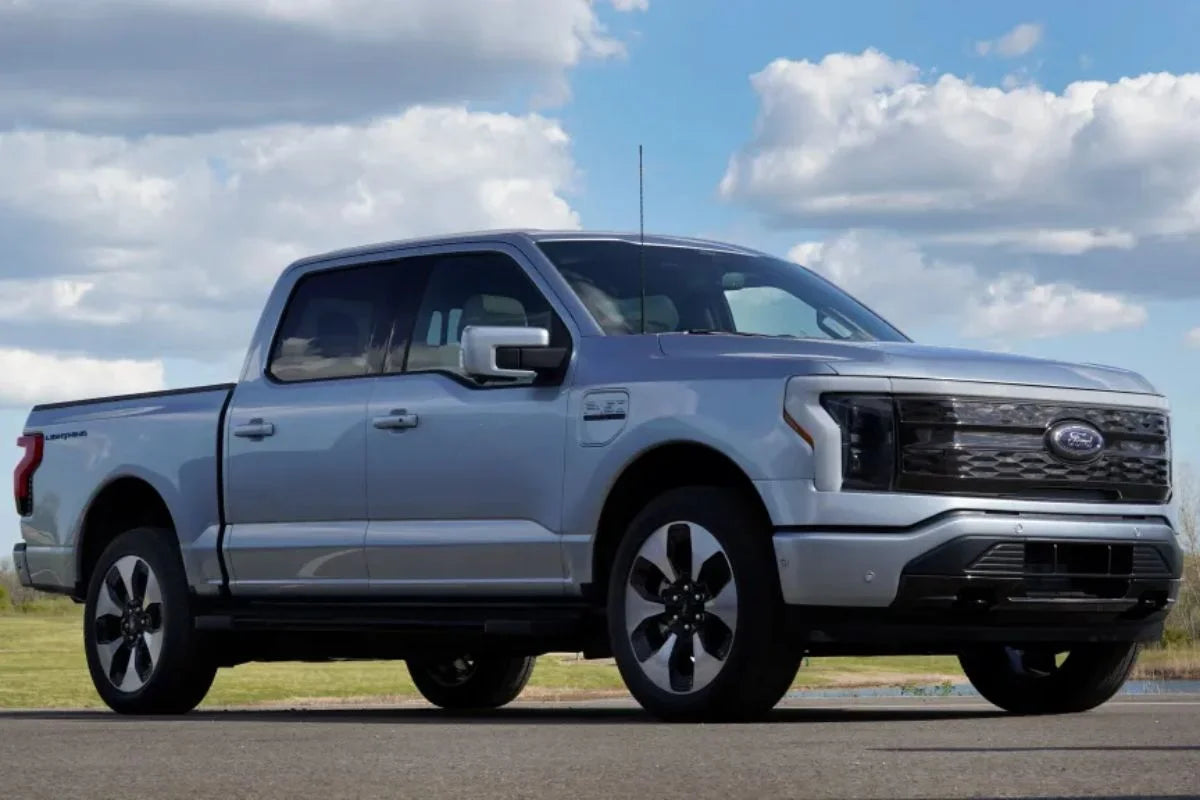Das Aufladen eines Ford Mustang Mach-E oder F-150 Lightning ist einfach, wenn Sie die Optionen und Best Practices kennen. Für zu Hause bietet Ford das mobile Ladegerät (serienmäßig im Fahrzeug), das an 120-V- oder 240-V-Steckdosen angeschlossen werden kann. An einer 120-V-Steckdose erhöht es die Reichweite nur um etwa 5 km pro Stunde und ist daher hauptsächlich für langsames Laden der „Stufe 1“ über Nacht gedacht . An einer 240-V-Steckdose ( NEMA 14-50 ) bietet das mobile Ladegerät eine Reichweite von etwa 34 km pro Stunde . Für schnelleres Aufladen zu Hause bietet Ford die Connected Charge Station (festverdrahtete Wandladestation mit bis zu 48 A), die die Reichweitenerweiterungsbatterie eines Mach-E in etwa 11 Stunden (ca. 43 km/h) von 0 auf 100 % aufladen kann. Ladegeräte der Stufe 2 von Drittanbietern (ChargePoint Home Flex, Enel X JuiceBox, Siemens usw.) sind ebenfalls mit Elektrofahrzeugen von Ford kompatibel und können bis zu 9–11 kW liefern. In der Praxis erhöht ein Ladegerät der Stufe 2 zu Hause oder am Arbeitsplatz die Reichweite dieser Fahrzeuge in der Regel um etwa 32 bis 43 Kilometer pro Stunde .
DC-Schnellladen: Electrify America und Tesla Supercharger
Unterwegs unterstützen beide Fahrzeuge das DC-Schnellladen . Der Mach-E kann mit bis zu ~150 kW laden, der F-150 Lightning erreicht Spitzenwerte von etwa 150–170 kW. Mit einem DC-Schnellladegerät (CCS-Anschluss) mit 150+ kW können Sie in weniger als einer Stunde Hunderte von Kilometern Reichweite hinzufügen. Zum Beispiel:
-
Erweiterte Reichweite des Mach-E : 10 %–80 % in ~36 Minuten
-
Mach-E-Standardbereich : 10 %–80 % in ~32 Minuten
-
F-150 Lightning SR : 15 %–80 % in ~36 Minuten
-
F-150 Lightning ER : 15 %–80 % in ~41 Minuten
Ford unterstützt nun auch das Tesla Supercharger-Netzwerk über einen offiziellen NACS-Adapter. Der Adapter funktioniert mit Teslas Superchargern, jedoch nicht mit den Home-/Destination-Chargern. Damit können Sie über 17.800 Tesla Supercharger in den USA nutzen.
Ladenetzabdeckung in den USA
Ford-Elektrofahrzeugfahrer haben hervorragenden Zugang zu öffentlichen Ladestationen:
-
Electrify America : Über 1.000 Stationen, ~4.800 Ladegeräte
-
EVgo : Über 1.100 Schnellladestationen, ~4.080 DC-Ladestationen
-
ChargePoint : Tausende von Level 2- und DCFC-Ladegeräten
-
Tesla Supercharger : Über 17.800 jetzt für Ford per Adapter zugänglich
Alle diese Ladestationen sind in das Ford BlueOval™ Charge Network integriert, das größte einheitliche öffentliche Ladenetzwerk in Nordamerika. Über die FordPass -App oder Ihr SYNC- System im Auto können Sie:
-
Finden Sie Ladestationen in Echtzeit
-
Filtern Sie nach Geschwindigkeit, Verfügbarkeit oder Steckertyp
-
Starten Sie Plug & Charge-Sitzungen ohne Karten oder Apps
Ladegeräte finden und verwenden
Verwenden Sie die FordPass App , um Ladestationen in Ihrer Nähe zu finden. Gehen Sie zu Energie → Öffentliches Laden und filtern Sie nach dem gewünschten Typ (Level 2, schnelles Gleichstrom usw.). Sie können auch Folgendes verwenden:
-
PlugShare für Community-Bewertungen und Karten-Overlays
-
ChargePoint-/EVgo-Apps für stationsspezifischen Zugriff
-
ABRP für EV-Routing
Am Bahnhof:
-
Schließen Sie Ihr Fahrzeug an (verwenden Sie einen Adapter für Tesla)
-
Plug & Charge nutzen oder Sitzung per App starten
-
Ziehen Sie den Stecker und gehen Sie, wenn Sie fertig sind
Tipps :
-
Kommen Sie mit 10–20 % Ladung an Schnellladegeräte für höchste Geschwindigkeiten
-
Nur bis 80 % aufladen, sofern dies nicht für die Reisereichweite erforderlich ist
-
Bestätigen Sie, dass die Station CCS oder NACS unterstützt
Ladezeiten und Reichweitenschätzungen
Zu Hause:
-
40 A/NEMA 14-50 (mobiles Ladegerät) : ca. 34 km/h
-
48-A-Wandladegerät (angeschlossene Ladestation) : ~27 Meilen/Std.
Schätzungen der vollständigen Ladung:
-
Mach-E Extended (91 kWh) : ~11 Stunden bei 48 A
-
F-150 Lightning SR (98 kWh) : ~10–11 Stunden bei 40 A
-
F-150 Lightning ER (131 kWh) : ~15 Stunden bei 40 A oder ~8 Stunden bei 80 A
DC-Schnellladung:
-
Erwarten Sie 100–200 Meilen in 30–40 Minuten, je nach Modell und Batteriestand
Anreize, Prämien und FordPass
Ladeanreize:
-
Bundessteuergutschrift : 30 % bis zu 1.000 $ für die Installation eines Heimladegeräts
-
Staatliche/lokale Versorgungsrabatte : variieren, oft 250–500 $
-
BlueOval Rewards : Sammeln Sie FordPass-Punkte für das Aufladen
Verwenden Sie die FordPass-App , um:
-
Überwachen Sie den Ladezustand aus der Ferne
-
Zeigen Sie Ihren Ladeverlauf an
-
Ladestationen finden
-
Prämien sammeln und einlösen
Empfohlene Lektüre: Fords 2026 F-150 Lightning STX bietet mehr Reichweite ohne zusätzliche Kosten








Aktie:
5 versteckte EV-Einstellungen zur Erhöhung der Reichweite
Wissenschaftler warnen vor nächtlichem Aufladen von Elektrofahrzeugen zu Hause